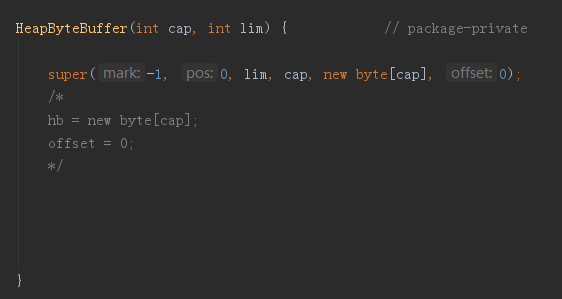一,概述
ByteBuffer 是Buffer类的重要实现类,nio中最常用的缓冲区,提供了一组功能用于操作byte数组
缺点:无法自动扩容
主要实现方式分为两种:
1,直接操作内存的地址保存数据,实现类:DirectByteBuffer,
2,内建字节数组保存数据,实现类:HeapByteBuffer
类继承图

二,实现类
(1),DirectByteBuffer
通过ByteBuffer 提供的函数获取 DirectByteBuffer的实例
ByteBuffer sendBuf = ByteBuffer.allocate(10);//获取堆内存buff:使用byte数组保存数据
DirectByteBuffer通过unsafe类实现堆外内存的操作
1,构造器处理过程:
cap:设置初始容量大小
DirectByteBuffer(int cap) { // package-private //初始父类中的 mark,lim,pos,cap super(-1, 0, cap, cap); boolean pa = VM.isDirectMemoryPageAligned();//检查虚拟机中直接内存页是否对齐 int ps = Bits.pageSize();
long size = Math.max(1L, (long)cap + (pa ? ps : 0)); Bits.reserveMemory(size, cap);//预先向内存申请 long base = 0; try { base = unsafe.allocateMemory(size);//分配内存、返回分配到的内存的首地址 } catch (OutOfMemoryError x) { Bits.unreserveMemory(size, cap); throw x; } unsafe.setMemory(base, size, (byte) 0); if (pa && (base % ps != 0)) { address = base + ps - (base & (ps - 1)); // 获取本buffer的首地址 } else { address = base; } cleaner = Cleaner.create(this, new Deallocator(base, size, cap));//保留地址,用于释放地址 att = null; }
(2),HeapByteBuffer
获取实例
ByteBuffer sendBuf = ByteBuffer.allocate(10);//获取堆内存buff:使用byte数组保存数据
基于堆的数据缓存区,数据处理比使用直接内存慢
创建实例时,构造器new byte创建保存数据的Byte数组,cap设置的缓冲区大小
